Two Caribbean Scenes by Brownell are “Rare Treasures of Their Kind”
“ …[W]hen he [Brownell] visited the West Indies, that must have been a thrilling experience to the artist, for he seems to have entered so perfectly into harmony with his subjects and there are many canvases that record his stay in the Caribbean Sea. The bright colour of the sea, sky and figures of the inhabitants, the busy life [...] proved a veritable gold mine of inspiration.”
— Arthur Lismer [1]
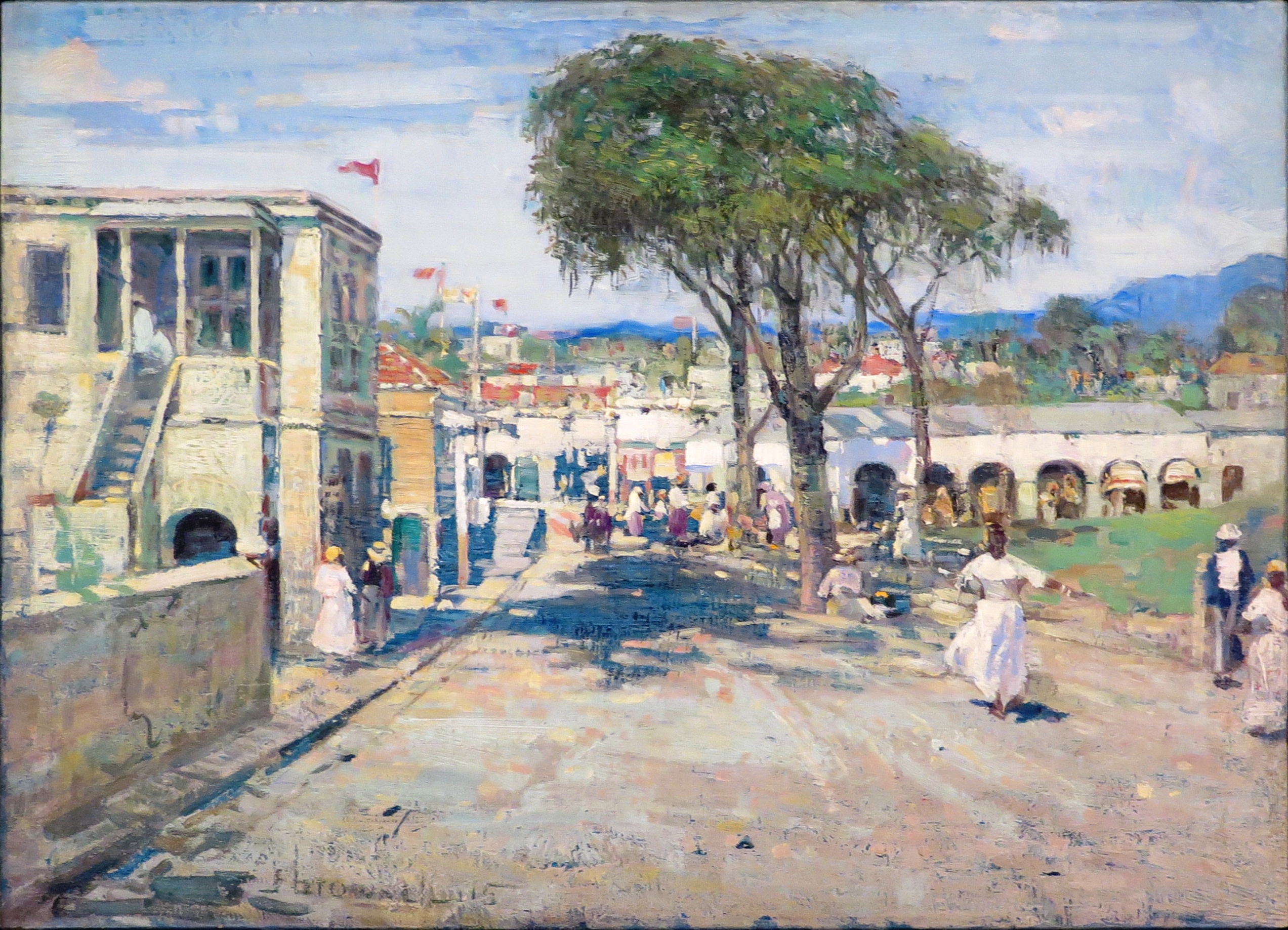
Franklin Brownell, R.C.A. (1857-1946)
Street Scene, West Indies, 1915
Oil on canvas, 15 x 18 in (38.1 x 45.7 cm)
Introduction by Alan Klinkhoff
|
Although referring to another St. Kitts painting Arthur Lismer continues with a description easily appropriate to the master works presently available, Brownell’s oil on canvas work Street Scene, West Indies of 1915, pictured above. “The most striking characteristic [...] is the vivacity and sparkling animation of its aspect. It is painted with great freedom and enjoyment. The clean strong colour admirably expresses the character of the subject [...]. It is the feeling of sunny, almost boisterous weather that is the chief attraction.” Lismer continues, “Observe the masterly painting of the sky. These clouds are not elements put in for purely decorative purposes, they are weather laden argosies. They give a majestic feeling of space to the whole composition. [...] The dresses of the native women white, creamy, lavender, create a luminous and contrasting tone scheme. [...] His colour is clean and vivid, his effects of cloud, weather, sunlight and flickering shadows manifest the touch of a master artist. [...] The scintillating pattern of light and dark, of bright and intense colour and grayer areas presents a magical effect of energy and pleasurable animation [2].” |
Alan welcomes the Women’s Arts Society to the Gallery at the Franklin Brownell Retrospective Exhibition held at Walter Klinkhoff Gallery in September - October 2007. The show was held on the 150th anniversary of Brownell’s birth and was the first comprehensive survey of his work to be shown in Montreal [3]. |
The noted former director of the National Gallery of Canada, J. Russell Harper praised Brownell’s island pictures, writing in his landmark text, Painting in Canada: A History, “...the vivid sunshine of the West Indies revolutionized the subject matter and light of his canvases; his paintings of natives with their brilliant handkerchiefs and red pottery were thereafter highpoints of his production [4]."
Franklin Brownell, R.C.A. (1857-1946)
At the Well, West Indies, c. 1915
Recently Sold by Alan Klinkhoff Gallery
Brownell’s trips to the Caribbean saw a burst in creativity which resulted in many of the artist’s most celebrated pictures that many argue are superior to anything else in oeuvre. At the Well, West Indies and Street Scene, West Indies represent a defining period of Brownell’s artistic career.
Two Caribbean Scenes by Brownell are “Rare Treasures of Their Kind”
At the Well, West Indies, c. 1915 and Street Scene, West Indies, 1915, Alan Klinkhoff Gallery,
Peleg Franklin Brownell (1857-1946)
Peleg Franklin Brownell was born in New Bedford, Massachusetts. He studied first at the Boston Museum of Fine Arts with Thomas Wilmer Dewing before travelling to Paris to attend the Académie Julian where he learned the rudiments of paintings from Tony Robert-Fleury and William Bouguereau [5]. He later studied privately with Léon Bonnat [6].
While in Paris, Brownell met “William Brymner and was recruited as Headmaster of the Ottawa School of Art in 1887” [7] [8]. Brownell, like Brymner, taught a number of notable alumni, including Pegi Nicol MacLeod. MacLeod spoke fondly of Brownell’s tutelage. In a letter to fellow artist Marian Scott, MacLeod wrote, “Brownell made me aware of light” [9]. In Ottawa, he would subsequently head up the Women’s Art Association of Ottawa (later the Ottawa Art Association). He would make our nation’s capital his home until his death in 1946.
Brownell was a founding member of the Canadian Art Club and his works were exhibited in Canada with the Royal Canadian Academy and the Ontario Society of Artists. He faithfully mounted an annual exhibition with his Ottawa dealers, James Wilson & Co, until 1933 [10]. Brownell also showed internationally at the 1893 Chicago World's Columbian Exposition, the 1900 Paris World's Fair [11], the 1904 Louisiana Purchase (World's Fair) Exhibtion in St. Louis, and the British Empire Exhibition, 1924/5 in Wembley. He was elected to the R.C.A. in 1895 and retired in 1916 [12].
| The Wembley Selection Committee, National Gallery of Canada, Ottawa, January 1923. Background: Herbert Walker, George Harbour (National Gallery Staff), From left to right (seated and standing): Clarence Gagnon, Florence Wyle, F.S. Challener, Randolph Hewton, Horatio Walker, Eric Brown, Franklin Brownell, E. Wyly Grier, H.O. McCurry, Arthur Lismer [13]. |
Trips to the West Indies (c. 1911-1916)
It has been long recognized that Brownell’s style underwent a significant change after a trip to the West Indies in the early 1900s [14]. In the tropics, he entered a world of exotic textiles and landscapes of intense, unimaginably bright colours.
By 1915, he made several trips to the area and excitedly made more than forty canvases, watercolours, and pastels [15] [16]. One such work, On the Beach, Basse-Terre, W.I. was purchased for the National Gallery by Eric Brown at the 1914 R.C.A. exhibition [17]. Brown was the first director of the National Gallery, Brownell’s good friend and on at least one occasion, the artist’s travel companion to the West Indies [18]. Brown remained a great advocate of Brownell’s artwork and in the 1922 retrospective exhibition for the artist held at the National Gallery of Canada, Eric Brown wrote,
“Mr. Brownell is, before all else, a landscape painter [...]. [His] receptiveness was never more evident than during his visits to the West Indies when he laid hold of an entirely new life between sea and sky and made it his own series of pictures, which those that saw them after his return will remember as one of the most interesting exhibitions they ever saw” [19].
| Painting in St. Kitts, British West Indies, n.d. (1913?), Photo by Maud Brown[?], Eric Brown’s wife [20]. |
Another former director of the National Gallery of Canada, J. Russell Harper, wrote of the change in Brownell’s work after his time in the island region, “...the vivid sunshine of the West Indies revolutionized the subject matter and light of his canvases; his paintings of natives with their brilliant handkerchiefs and red pottery were thereafter highpoints of his production” [21.]
At the Well, West Indies, c. 1915 and Street Scene, West Indies, 1915
At the Well, West Indies and Street Scene, West Indies are extraordinary examples from the artist’s most celebrated body of work and serve as stunning evidence of Brownell’s stylistic maturity.
Brownell’s treatment of the effects of light is demonstrated clearly in At the Well, West Indies. We observe the overall blue-violet tint of Brownell’s hazy island air as it hula hoops around the figures and rustles the foliage of the shading tree. In the lower right foreground, Brownell beautifully describes the sunlight amidst the swaying canopy of leaves in response to the tropical breeze that plays across them. The beating sun seems to peek through the leaves of this mostly unseen tree to cast its rays on the ground in a matrix of dappled blue, seafoam green, lavenders, whites, and yellows. Even his tenebrism possess strong colour; shadows are indicated with a harmony of blues and purples. The sharp reds of the kerchiefs and pottery against the generally cool tones and colours of the picture provide wonderful bursts of colour.
Brownell masterfully observes the characters that rest under the shade of this tree. They appear casual and unposed and seem as though they have very nauturally congregated at the well. Three women, whose white linens all brilliantly catch the flickering glints of sunlight, mingle loosley and overlap one another. The only stand alone figure is the man at left, who Brownell captures as dutifully manning the well-pump.
In Street Scene, West Indies, 1915, we witness a bustling island street where the intensity of Brownell’s light is so vivid that one can nearly feel the heat of the Caribbean sun as it bounces from the scorching street, buildings, and the gleaming garments of his figures.
Street Scene, West Indies, 1915
The foreground is largely unpopulated, with only a handful of the frontal figures flanking the left and right of the canvas. Instead, Brownell masterfully ornaments his street with a delicate dance of colourful brushstrokes of varied direction and length.
Intervals of flashy red flags run parallel to the street, stressing the continuity and guide our eye toward a busy crowd in the distance. Similarly, Brownell’s rendering of sunlight and a hazy mist to soften the contours of objects such as the flags and rooftops makes them appear to be less defined, thus creating a sense of depth and grand spaciousness. This same effect can be seen in the hills that loom just beyond the buzzing congregation, whose brilliantly blue tops seem to coalesce with the horizon.
Fellow artist and teacher, Arthur Lismer wrote of another Antillean scene in the collection of the National Gallery of Canada, The Beach, St. Kitts, 1913 (Access. No. 2033), “The most striking characteristic [...] is the vivacity and sparkling animation of its aspect. It is painted with great freedom and enjoyment. The clean strong colour admirably expresses the character of the subject [...]. It is the feeling of sunny, almost boisterous weather that is the chief attraction” [22].
The body of work that Brownell created during his tours in the Caribbean is relatively limited. The majority of pictures from this small series are housed in institutions or remain in private hands, making At the Well, West Indies and Street Scene, West Indies rare treasures of their kind. The pictures have been in the same Ottawa family collection since their acquisition, reputedly from the artist himself. For their brilliance, At the Well, West Indies and Street Scene, West Indies are fine examples of Brownell’s most sought after series.
Having recently sold At the Well, West Indies, Alan Klinkhoff Gallery is proud to make available to collectors Street Scene, West Indies of 1915.
NB
In the October 1915 Canadian Art Club exhibition, Brownell submitted at least two pictures from a trip to St. Thomas, numbers 25 and 27, Boat Landing, St. Thomas, Dutch West Indies and Street Charlotte Aumalie [sic], Dutch West Indies, respectively [23]. In the 1988 show The Canadian Art Club: 1907-1915 curator Robert Lamb notes Street Scene, West Indies to be of a “similar subject” to Charlotte Aumalie [sic], Dutch West Indies [24]. We might speculate, then, that this picture is of the St. Thomas area. It has also been suggested to us that the area may be St. Kitts and Nevis looking toward Mount Liamuiga, near Independence Square (formerly Pall Mall Square).
Endnotes
1. Arthur Lismer, “The Beach St. Kitt’s [sic], by Franklin Brownell,” Outline for Picture Study, series 1, no. 7 (Ottawa, National Gallery of Canada, n.d. [1932?], unpaginated.
2. Arthur Lismer, “The Beach St. Kitt’s…", n.d. [1932?], unpaginated.
3. Franklin Brownell RCA, OSA (1857-1946), (Montreal: Galerie Walter Klinkhoff, 2007), p. 1
4. J. Russell Harper, Painting in Canada: A History (Toronto: University of Toronto Press, 1977), p. 217
5. Robert J. Lamb, The Canadian Art Club : 1907 - 1915, (Edmonton, Alberta: Edmonton Art Gallery, 1988), p. 74
6. Ibid.
7. National Gallery of Canada, The Photographer, 1896, https://www.gallery.ca/collection/artwork/the-photographer
8. Jim Burant notes that, “It is not certain how he was recommended for a position at the Ottawa School of Art. He may have kept in touch with fellow students from his Paris days, including William Brymner who, returning to Canada in the winter of 1880, had become the Ottawa School of Art’s first headmaster.” Jim Burant, “Peleg Franklin Brownell and the Fine Arts in Ottawa”, North by South: The Art of Peleg Franklin Brownell (Ottawa: Ottawa Art Gallery, 1998), p. 20.
9. Marian Scott, Interview with Joan Murray 27 August 1980, as quoted in Daffodils in Winter: The Life and Letters of Pegi MacLeod, Joan Murray, ed., (Moonbeam, ON: Penumbra Press, 1984), p. 19
10. Robert Stacey, “Making Us See the Light: Franklin Brownell’s ‘Middle Passage ’”, North by South: The Art of Peleg Franklin Brownell, (Ottawa: Ottawa Art Gallery, 1998), p. 92
11. He was awarded a bronze medal for his R.C.A. diploma work, The Photographer, 1896, Oil on canvas, 61.2 x 51.2 cm., which is now in the National Gallery of Canada in Ottawa (Access. No. 126).
12. Eric Brown, Director, National Gallery of Canada, Retrospective Exhibition of the work of Franklin Brownell, R.C.A, November 1st to 30th, (Ottawa: National Gallery of Canada, 1922), p. 4
13. Photo by Hands Studio, Ottawa. National Archives of Canada, Ottawa, McCurry Collection (PA-122353), reproduced in North by South: The Art of Peleg Franklin Brownell(1998), p. 51
14. In addition to the other cited quotations from Lismer , Harper, and Brown, Dennis Reid in his landmark text, A Concise History of Canadian Painting, wrote that Brownell’s mastery of “light and colour [...] began — as in The Beach, St. Kitts — to alleviate the academic routine of his earlier work” (Toronto: Oxford University Press, 1973, p. 123). In A Short History of Canadian Art, Graham McInnes states, “Brownell’s West Indian scenes have the brightness and hardness of diamonds” (Toronto: MacMillan Co., 1939, p. 50).
15. Elizabeth Cadiz Topp, Endless Summer: Canadian artists in the Caribbean, (Kleinberg, Ont.: McMichael Canadian Art Collection, 1988), p. 22
16. How many trips and when these trips took place is unclear. Elizabeth Cadiz Topp speculates that it was any number of trips during different “seasons” from the period of 1911 to 1914, as Brownell’s Caribbean vistas of which Cadiz Topp was aware at the time of the show are dated as such. The present Street Scene, West Indies, 1915 suggests a possible trip after the aforementioned dates. See Cadiz Topp, 1988, p. 37, note 35 for further details.
17. On the Beach, Bassetreem W.I., 1914, Oil on canvas, 87.6 x 77.3 cm, National Gallery of Canada, Ottawa, Accession No. 1033
18. Jim Burant, 1998, p. 92
19. Eric Brown / NGC, 1922, p. 3
20. National Archives of Canada, Ottawa, F. Maud Brown Collection (PA-121219), reproduced in reproduced in North by South: The Art of Peleg Franklin Brownell (1998), p. 48
21. Harper, 1977, p. 217
22. Lismer, “The Beach St. Kitt’s…", n.d. [1932?], unpaginated.
23. Catalogue of the Canadian Art Club Eighth Annual Exhibition, 1915, (s.l. [Toronto?]: s.n., 1915), unpaginated
24. Lamb, 1988, p. 87



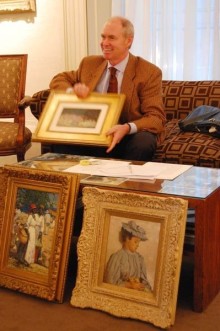

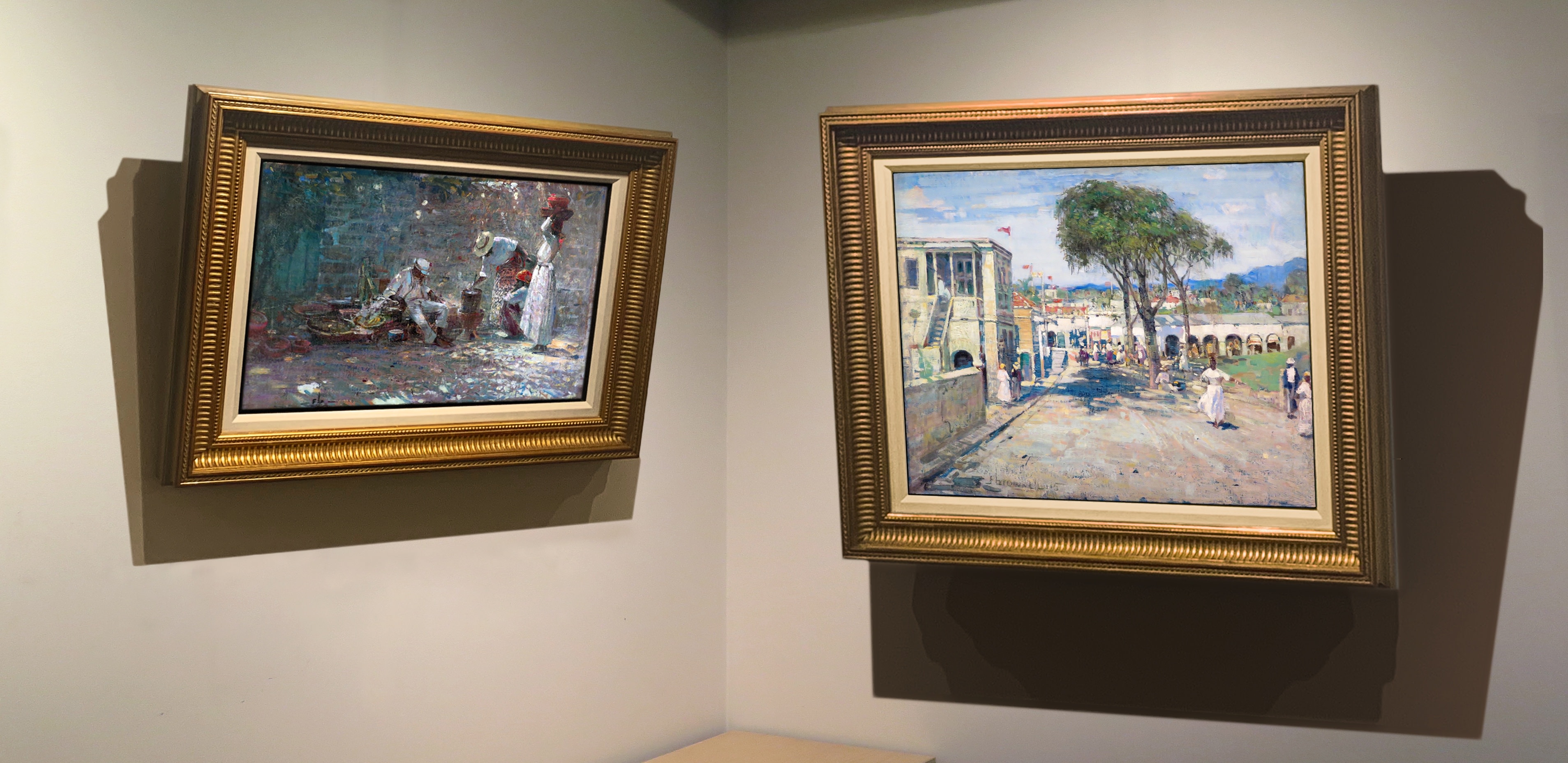
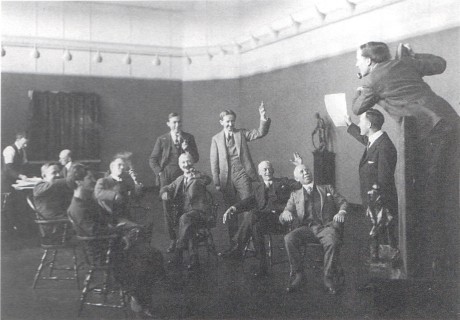
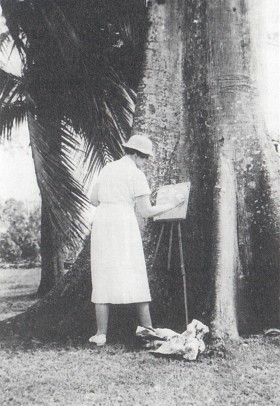







Comments
Please tell me the selling price.
Add a comment